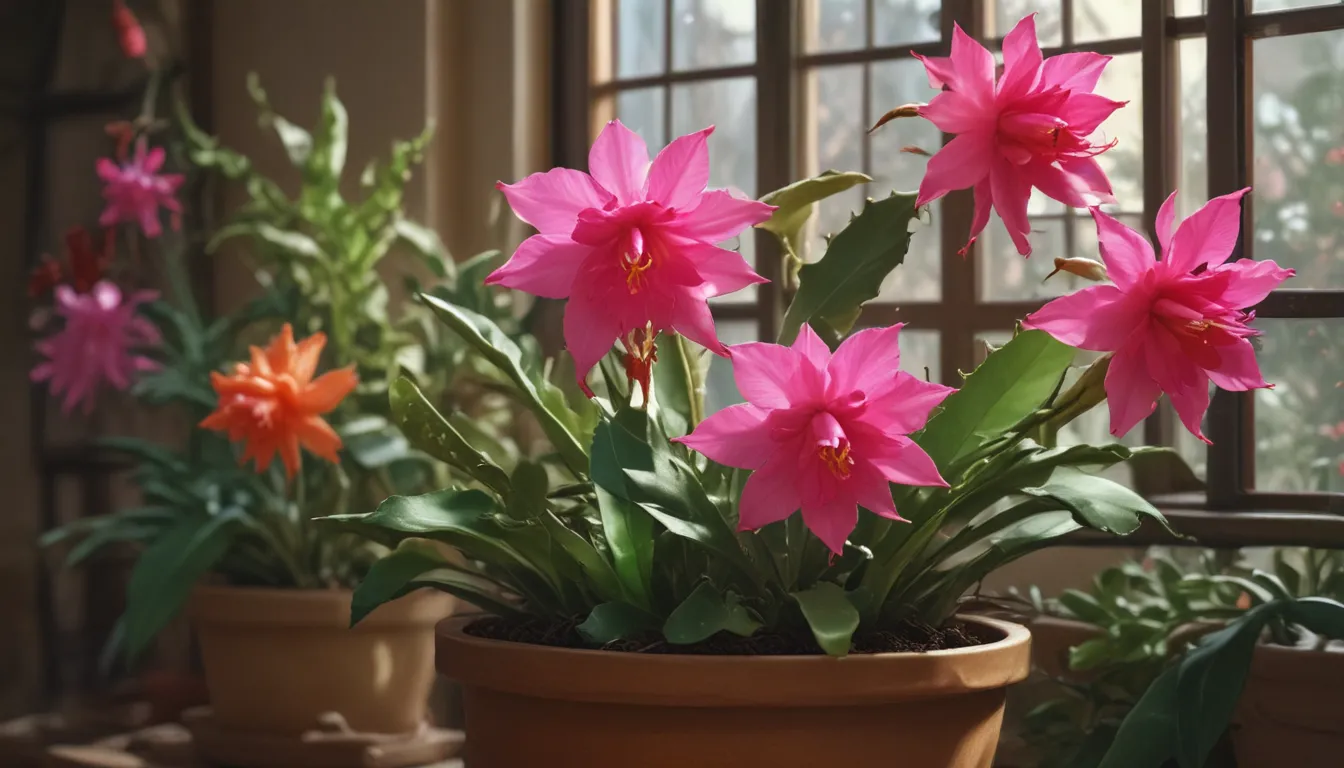How to Make Your Christmas Cactus Bloom: A Comprehensive Guide

Are you looking to bring festive cheer into your home with the colorful blooms of a Christmas cactus? This tropical houseplant is the perfect addition to your holiday decor, offering shades of pink, red, white, and yellow flowers that bloom during the fall and winter seasons.
Let’s dive into the world of Christmas cacti and explore how you can help your plant produce an abundance of beautiful flowers just in time for the holidays.
The Fascinating World of Christmas Cacti
The Christmas cactus, also known as Schlumbergera, is a unique plant species native to South American rainforests. Unlike traditional cacti, these plants have flattened segments called phylloclades or cladodes instead of true leaves. With no thorns and fleshy segments, Christmas cacti are easy to care for and make a stunning addition to any indoor garden.
Understanding the Blooming Process
To coax your Christmas cactus into a beautiful bloom, you need to understand the plant’s natural blooming cycle. These plants are known as “short-day” plants, which means they require a period of winter dormancy to set buds and initiate flowering. By replicating the natural conditions of their native habitat, you can encourage your plant to produce vibrant blooms in time for the holiday season.
Let’s explore the key factors that play a role in stimulating dormancy and promoting flowering:
Dormancy Is the Key
To kickstart the blooming process, you’ll need to create a period of dormancy for your Christmas cactus. This involves manipulating four essential factors: nourishment, moisture, light, and temperature. By making adjustments to these aspects of care, you can mimic the conditions that trigger blooming in the plant.
How to Coax Your Christmas Cactus to Bloom
-
Suspend Nutrition: Stop fertilizing your plant during the resting period. Withholding additional nutrients helps shift the plant from foliar to reproductive growth, promoting blooming.
-
Limit Moisture: Water your plant sparingly during dormancy, allowing the top inch of the soil to dry out between waterings. Avoid letting the soil dry out completely to maintain optimal conditions for your cactus.
-
Withhold Light: To replicate the shorter days of winter, expose your plant to total darkness for 14 to 16 hours each night. Ensure your plant receives bright indirect light during the day and complete darkness at night to promote blooming.
-
Decrease the Temperature: Provide your Christmas cactus with a cool environment where the temperature ranges from 50 to 55°F. Cool temperatures, combined with reduced light exposure and minimal water, help trigger dormancy and prepare your plant for flowering.
Starting a Holiday Tradition
Once your Christmas cactus begins to bud, it’s time to move the plant to a temperate room with indirect sunlight. Watch as the vibrant blooms unfurl, bringing a touch of holiday magic to your home. For a second bloom in spring, you can replicate the dormancy process six weeks before Easter to enjoy another round of beautiful flowers.
Adding Variety to Your Indoor Garden
If you’re looking to expand your collection of holiday cacti, consider adding Schlumbergera Gaertneri, also known as the Easter cactus, to your indoor garden. This species offers star-shaped blossoms with scalloped margins, perfect for bringing springtime cheer into your home. By following the same dormancy process, you can enjoy a beautiful display of blooms around the Easter holiday.
Embracing the Joy of Holiday Cacti
Christmas cacti are not only easy to grow but also make excellent family heirlooms that can be passed down through generations. With simple propagation techniques using cuttings, you can share the beauty of these tropical plants with your loved ones. Witness the joy of your Christmas cactus as it bursts into a riot of colorful blossoms, creating lasting memories for years to come.
Share Your Blooming Success!
Do you have any tips for helping your Christmas cactus bloom successfully each year? Share your insights in the comments section below and let us know about your blooming success stories. Your experiences and advice can help fellow plant enthusiasts create their thriving holiday displays.
For more resources on caring for Christmas cacti, explore the following articles:
- Why Do I See Hair-Like Roots on My Christmas Cactus?
- Why Is My Christmas Cactus Dropping Leaves?
- How to Identify and Control 7 Common Christmas Cactus Pests
- Why Is My Christmas Cactus Turning Purple?
Celebrating the beauty of Christmas cacti and the joy they bring to our homes is a cherished tradition for many plant lovers. By following these tips and embracing the natural blooming cycle of your cactus, you can create a stunning display of colorful flowers that capture the essence of the holiday season.
*





